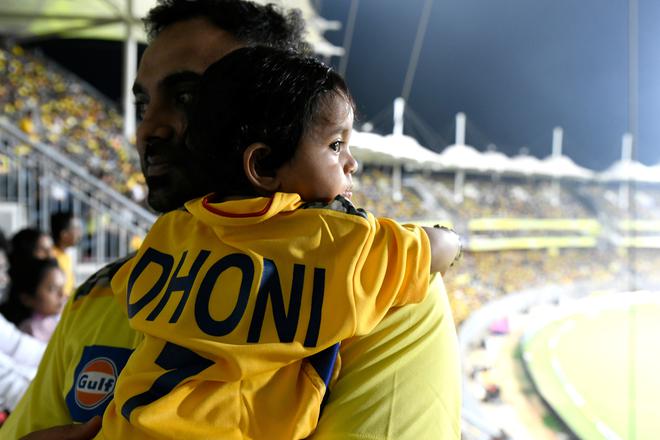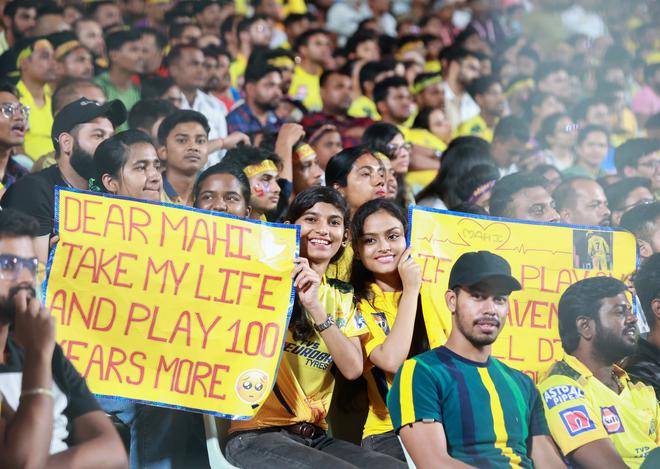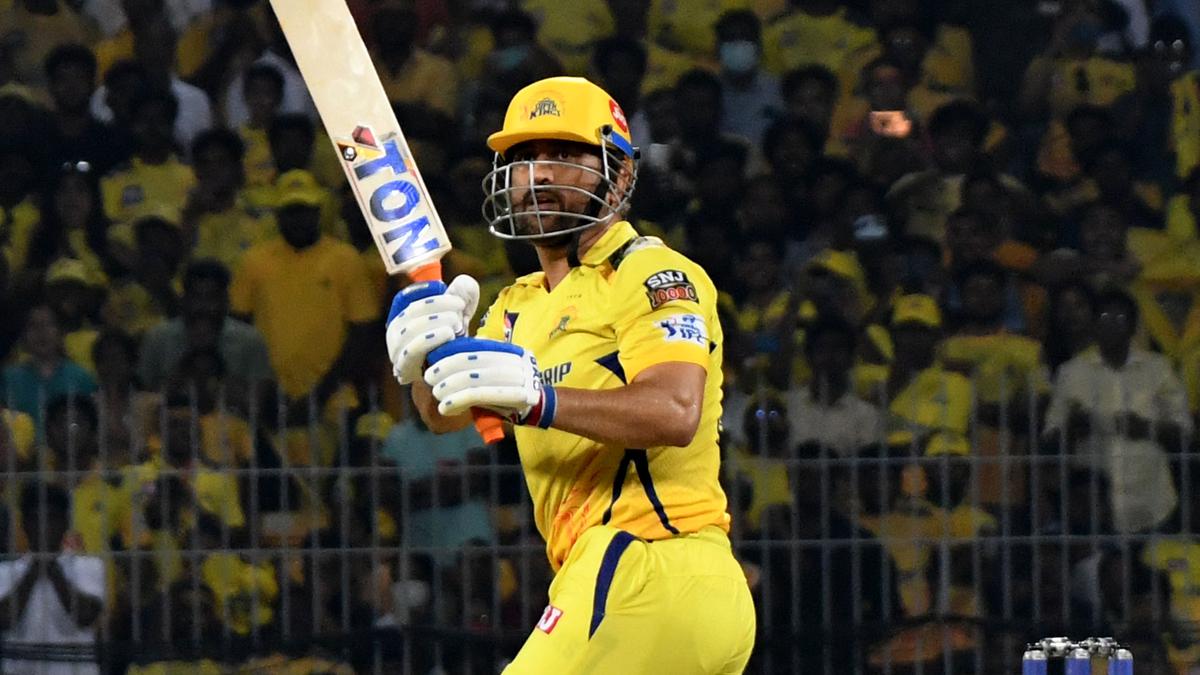M.S. Dhoni’s influence on Chennai Super Kings has been beyond just developing an IPL team. His approach is far more holistic than focusing simply on cricket.
Dhoni has always been a player who has worked to his rhythm, and as he has aged, the tendency to assess the opposition for weaknesses has become more pronounced.

Inspiring generations: A two-month old with a Dhoni jersey at the Chepauk Stadium to watch his hero play.
| Photo Credit: Samuel Rajkumar / SPORTZPICS for IPL
This is Dhoni 3.0.
His teammates have compensated for his almost total lack of time at the crease with the bat, but it also means the opposition has to adjust; he is not where he once used to be, batting at No. 4 or No. 5, often barely involved in attacks until suddenly, lethally, he is.
He has batted as low as No. 8 (six innings) and No. 6 (three innings) this season, smacking 98 off 50 balls with 10 sixes and three fours.
Dhoni also has the most sixes in the 20th over in the IPL (59) and is miles ahead of the second batter on the list, Kieron Pollard (33).
The most remarkable thing about Dhoni is just how unremarkably ‘normal’ he is. His arrival in the middle these days has turned into a spectacle, making his greatness feel more special.
On Sunday night, even before Ravindra Jadeja had walked back to the dugout, came the primal “ Dhoni, Dhoni” chant, the soundtrack integral to the Chepauk frenzy. CSK eventually lost the match, but it felt like the crowd had won.

Let the magic continues: Fans have repeatedly turned up this season, with posters requesting Dhoni to continue playing in the IPL.
| Photo Credit: Tamal Das / SPORTZPICS for IPL
“ Mahi sirf Ranchi ka nahi (Mahi does not belong to Ranchi alone),” an elderly man had said in 2019, on the sidelines of an India vs. South Africa Test match at the JSCA Stadium. “ Woh to Chennai ka bhi beta hai na ab (He is also Chennai’s son now),” he added.
Dhoni, indeed, is the ultimate outsider who became Chennai’s own Thala


